Island Life
“Where do you get all this stuff from?”. “Who is going to buy that?”… are recurring questions we get asked at LASSCO.
Just sometimes we can tell you the whole story: both where something came from, its history, and where it ended up. We’ve noticed that we seem to supply to Island dwellers continuously – be it those on Guernsey, Isle of Wight, Jamaica, Tasmania, Hong Kong or Nantucket. So here are some other end-to-end examples – all on the theme of Islands:
From The National Maritime Museum to Eel-Pie Island
Visitors to LASSCO Three Pigeons will remember the beautiful bronze and mahogany museum cases we bought from the National Maritime Museum in Greenwich. We salvaged 139 of them – in all sizes. They were made in the 1930’s when the Museum was founded and each was made for a particular priceless model ship.
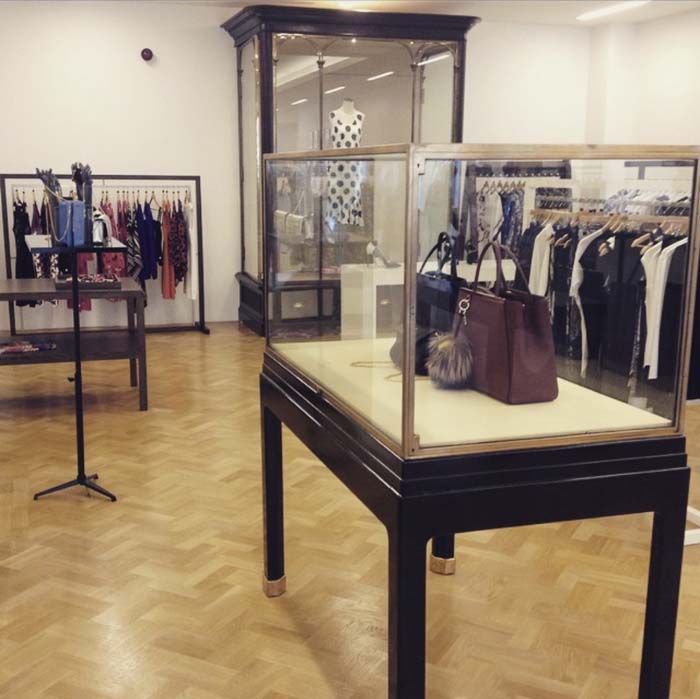
Why the Museum thought it appropriate to separate the boats from their beautiful cases we will never fathom but separate them they did: truck loads of them.
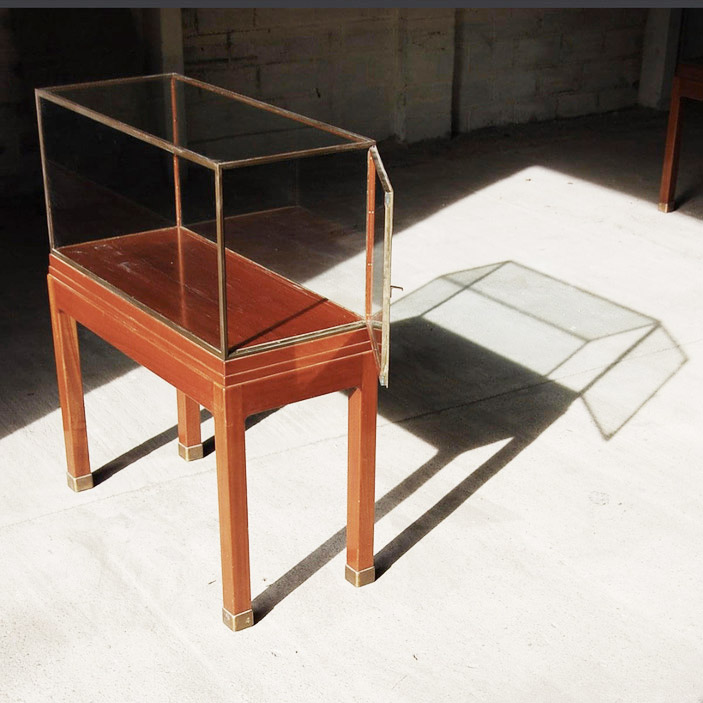
We sold them all around the world to some amazing locations. One unusual delivery was to Eel-Pie Island in the Thames. Only a narrow suspension footbridge connects the island to the bank so delivery by boat was necessary.
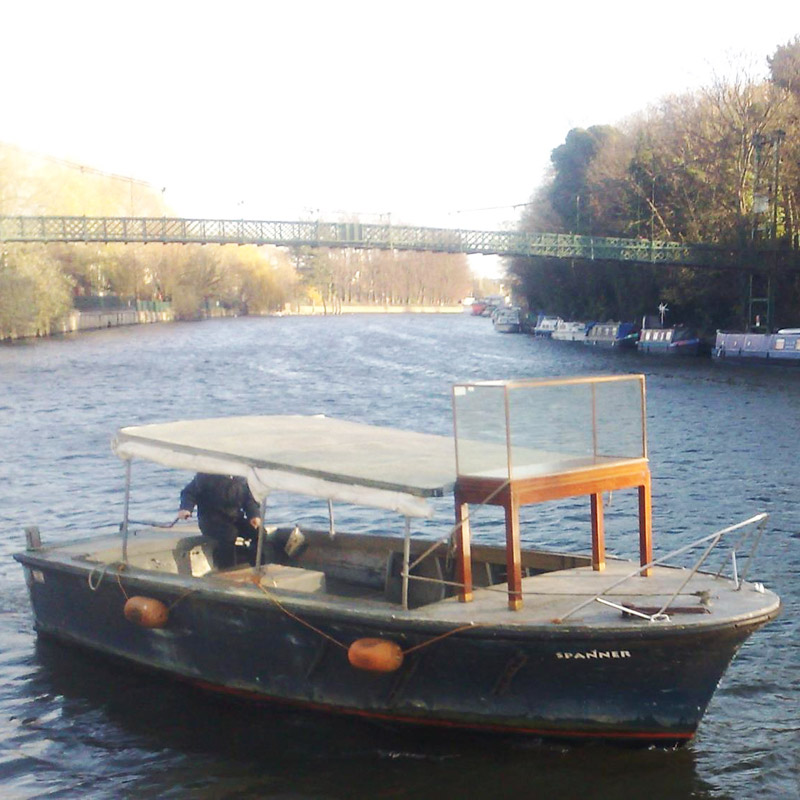
Eel Pie island was once famous for a venue that held rock concerts there: Free, The Rolling Stones, The Who and Pink Floyd all performed at The Eel-Pie Island Hotel.
The hotel burned years ago – the eyot now houses a community of residents artists and businesses, one of whom bought a cabinet. Confident at the tiller we were asked by the ferryman to pop the cabinet on the front deck of his river-launch – he signed for it(!) – and off it went for a new life on the Island.
The Medmenham Screen – shipped to Ireland
Some time ago, we salvaged an enormous and rather beautiful stone and wrought-iron screen at Medmenham Abbey – found on the bank of the Thames between Henley and Marlow.
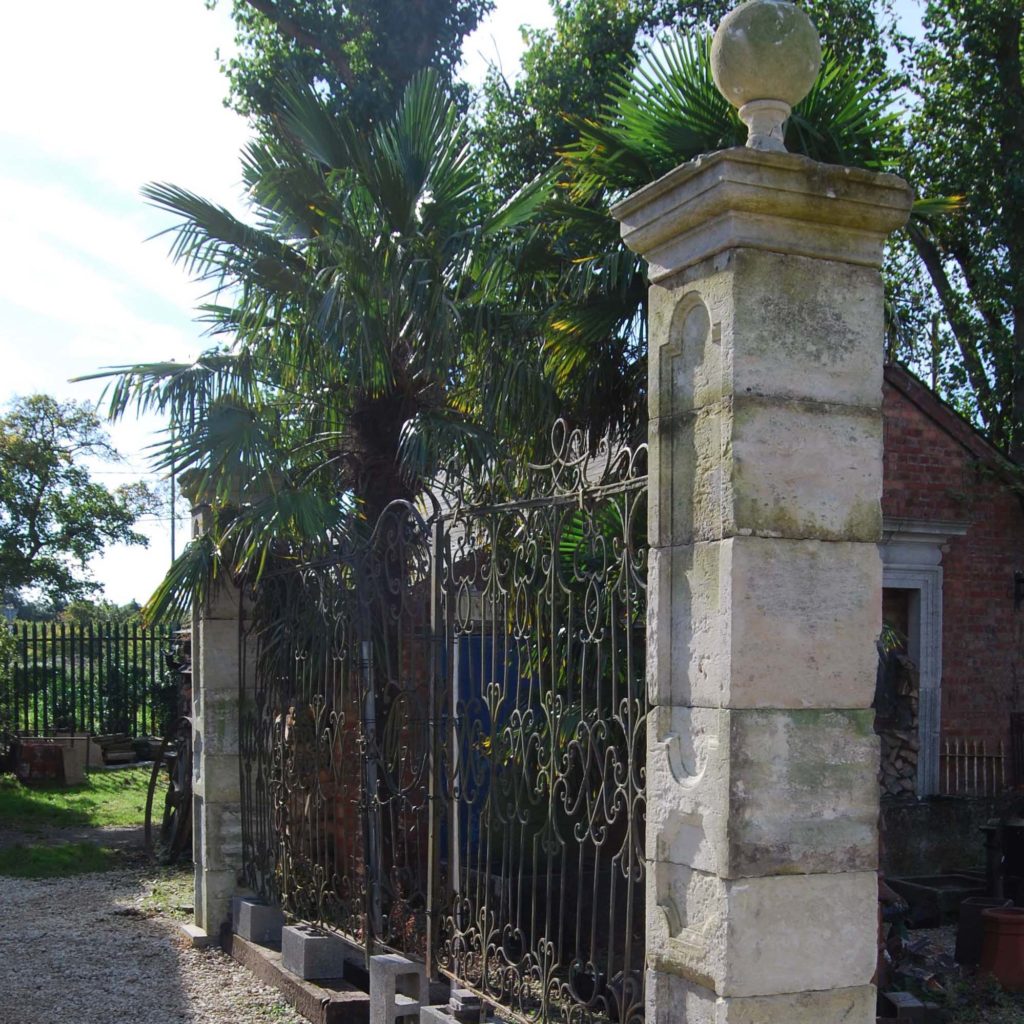
The delicate wrought iron, supported by stone pillars, had originally formed the conclusion of the formal gardens; the view through it had framed the sweeping bend of the Thames beyond. By the time we set eyes on it, the huge screen had long been demolished; the stone columns had been loosely stacked alongside the heli-pad in the grounds, the ironwork had been hidden in the woods and had become completely over-grown. We had to cut the panels out from brambles, nettles and goosegrass before dragging it free from afar – using our mobile crane, a long rope and a brace of walkie-talkies.
We believe the screen was originally Continental – probably French. And it isn’t known for how long, when standing, it had so elegantly marked the boundary between the formal garden and the river meadow but it probably would have been there in 1889 when Jerome K. Jerome described the Abbey and its notorious past in “Three Men in a Boat”:
“…nestling by a sweet corner of the stream, is what is left of Medmenham Abbey. The famous Medmenham monks, or “Hell Fire Club,” as they were commonly called, were a fraternity whose motto was “Do as you please,” and that invitation still stands over the ruined doorway of the abbey.
Many years before this bogus abbey, with its congregation of irreverent jesters, was founded, there stood upon this same spot a monastery of a sterner kind, whose monks were of a somewhat different type to the revellers that were to follow them, five hundred years afterwards.
The Cistercian monks,…listened there, through the long days, in silence, waiting for a voice from heaven; and all day long and through the solemn night it spoke to them in myriad tones, and they heard it not.”
The subsequent Club of “revellers”, coming long after the Cistercians’ departure, was founded by Sir Francis Dashwood of West Wycombe Park. Never originally known as The Hellfire Club – it was given that name much later – they were at the time “The Brotherhood of St. Francis of Wycombe” or the “Monks” or “Friars of Medmenham”.
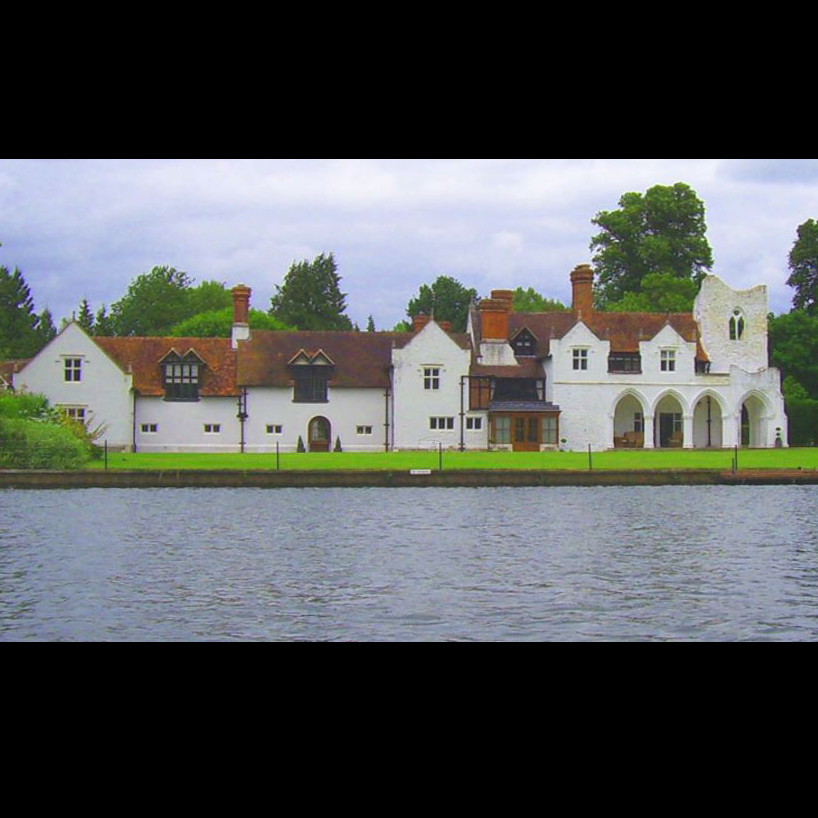
Dashwood had leased the old abbey from his friend Duffield in 1752 and was having considerable works done to the building. At this time, the motto “Fais ce que tu Voudras” was placed above a doorway in stained glass. It is thought that William Hogarth may have executed murals within; none, however, survive.
The Hellfire Club was essentially a debauched in-crowd of Georgian high society – the politicians, thinkers, and industrialists of the day – their meetings involved banqueting and drinking, pornography, prostitution and a whole lot more. Things might have been toned down a touch from 1762, after Dashwood became Chancellor under the first Tory Prime Minister – the Eton educated John Stuart 3rd Earl of Bute, but even then, today’s “Partygate” soirees held by the current British government at 10 Downing Street were nothing compared to the Hellfire Club’s at the Abbey. According to Horace Walpole, the members’ revelry…
“…. was rigorously pagan: Bacchus and Venus were the deities to whom they almost publicly sacrificed; and the nymphs and the hogsheads that were laid in against the festivals of this new church, sufficiently informed the neighbourhood of the complexion of those hermits.”
Legends of Black Masses and Satanic worship became attached to the club. Rumours abounded. The scandal was, to a degree, even celebrated by Dashwood, he enjoyed the notoriety.
Back on the heli-pad we got the stone and ironwork loaded onto the truck – it took three trips in all. And at LASSCO Three Pigeons, once we had done some initial restoration to the iron work and worked out the correct configuration of the screen, we rebuilt it.
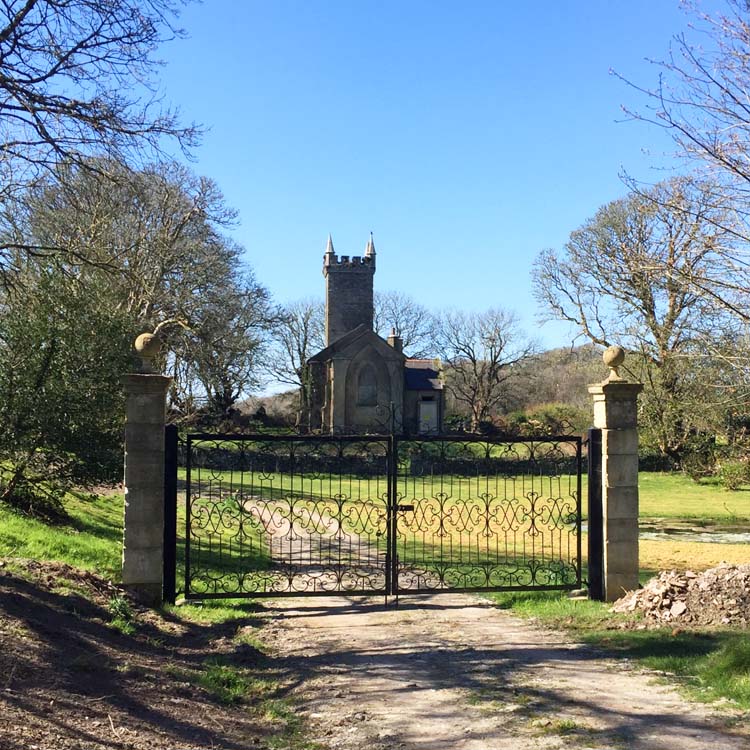
It was soon clocked by an enthusiastic customer who had just the spot for it in the grounds of a mansion he is painstakingly restoring in County Cork, Ireland. The difficult bit was to establish if the screen could be converted to a pair of gates. A metal fabricator in Norfolk was engaged for the conversion work – which went well – before the whole thing was packed up and sent across the sea to Ireland.
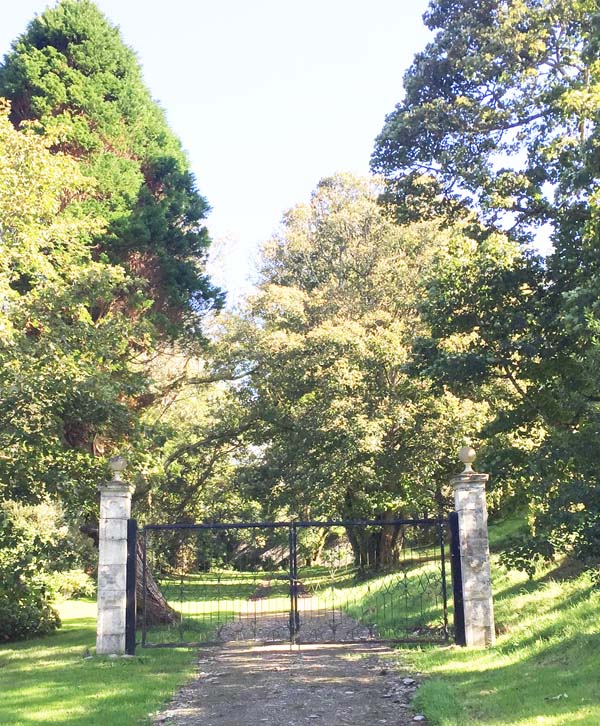
It now stands in a very peaceful glade at the end of a ride through the trees as you reach the church there. It is a secluded retirement for a gateway that, with each century, seems to get transplanted ever-further westwards.
A Temple for Temple Island
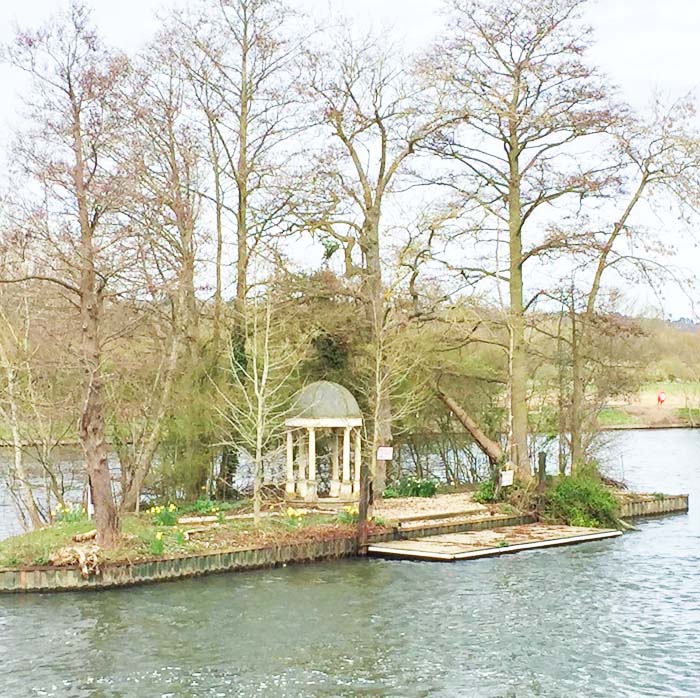
On a number of occasions, we have bought-back salvage that we originally sold. One of these was a stone garden temple. Decades old, not centuries, this one was a Classical dome raised on stone columns. Such follies work best as a focus or a stopping point in a landscape – for a view, a picnic, a marriage – we have sold a number of them over the years. This one we had retrieved from Berkshire and had rebuilt it at LASSCO Three Pigeons.
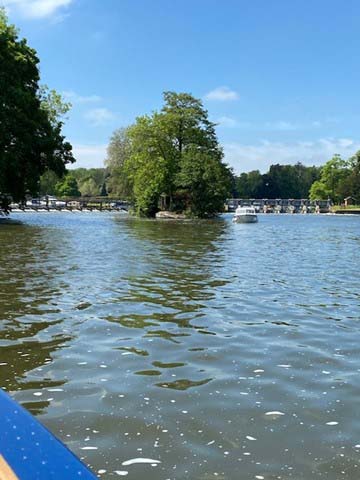
Temple Island on the Thames lies mid-stream just down-river from Medmenham and Marlow (on the Thames an “Eyot” such as this is often referred to as an “Ait”) and this one is not to be confused with a bigger ait of the same name at Remenhem. However this Temple Island, for long as anyone can remember, has lacked its Temple. The owners were keen to rectify this and thought this well-proportioned structure would be ideal. They wanted to be able to row-out and moor-up on a summer’s evening for a Gin & Tonic. The challenges were: how to get it onto the island, who should build it and how to build it robust enough to withstand winter floodwaters that can swamp the island on occasion; it would be getting its feet wet.
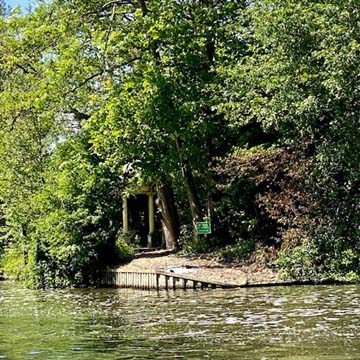
All these issues were resolved and we delivered the temple to a waiting barge, it shipped immediately and was duly built.
This all happened ten years ago, but the owners dropped in to LASSCO Three Pigeons the other day and were pleased to share these pictures of Temple Island today. The Temple itself is now a small landmark on the river – known to regular boaters and fishermen. In winter it is exposed and braces against the floodwaters. Come summer it recedes into a verdant canopy and provides a shady spot for both the happy owners – they’ve enjoyed many a Gin & Tonic there – and for other boaters who might on occasion sneakily moor-up to the private island for an illicit picnic.
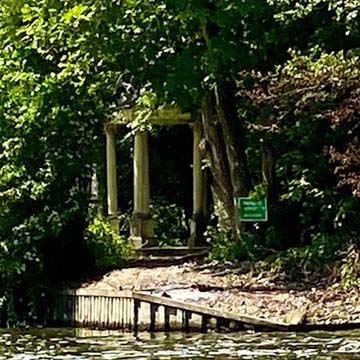
The British Museum Island Cabinet for Ai Weiwei
We have salvaged countless museum cabinets over the years from many museums – The V&A, The National Portrait Gallery, The Ashmolean, The National Maritime Museum (as seen above) to name four. One of the largest and most stylish was an island cabinet from the ceramics department of The British Museum. A different sort of island all together: it has a bronze turtle-top: the flap-up doors beautifully engineered – the lower section in polished mahogany. With Smirkian details and bent-glass corners it is almost certainly the work of Edwardes of Birmingham.
Whilst with us it proved very useful in the shop for our own displays but it was soon spotted by Ai Weiwei. A deal was done and we delivered it to his Art Handlers in the crane lorry (memorable for a loud sonic boom overhead as we unloaded – an RAF jet had been scrambled).
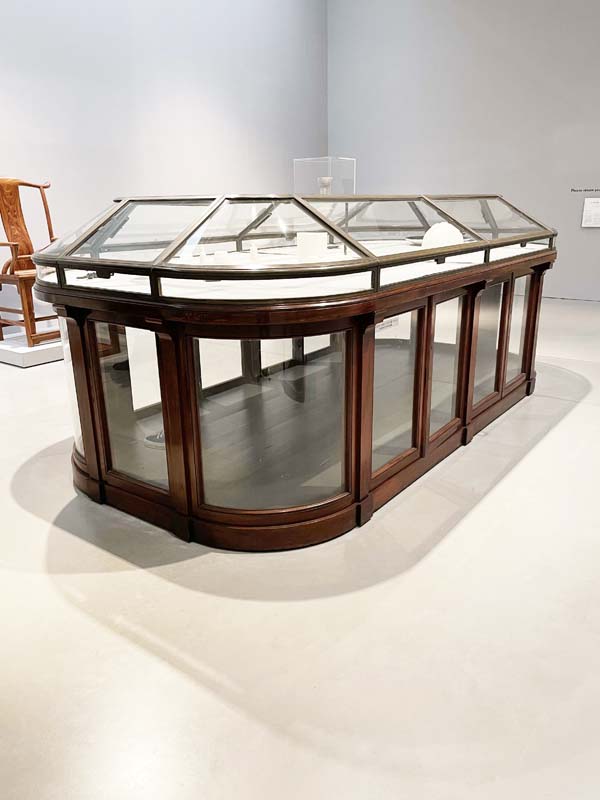
Ai Weiwei’s current exhibition “The Liberty of Doubt” at Kettle’s Yard, Cambridge “sparkles with connections and ideas” says Alastair Sooke in The Telegraph. And here we catch up with the cabinet – also sparkling.
The installation brings together and juxtaposes two sources – on one hand Ai Weiwei’s own sculptural work, including the fabulous “Dropping a Han Dynasty Urn” in Lego, and a sex-toy carved from the most luxurious of materials, jade – and on the other hand, Chinese historic sculptures purchased by the artist from an art auction house and later identified as fake.
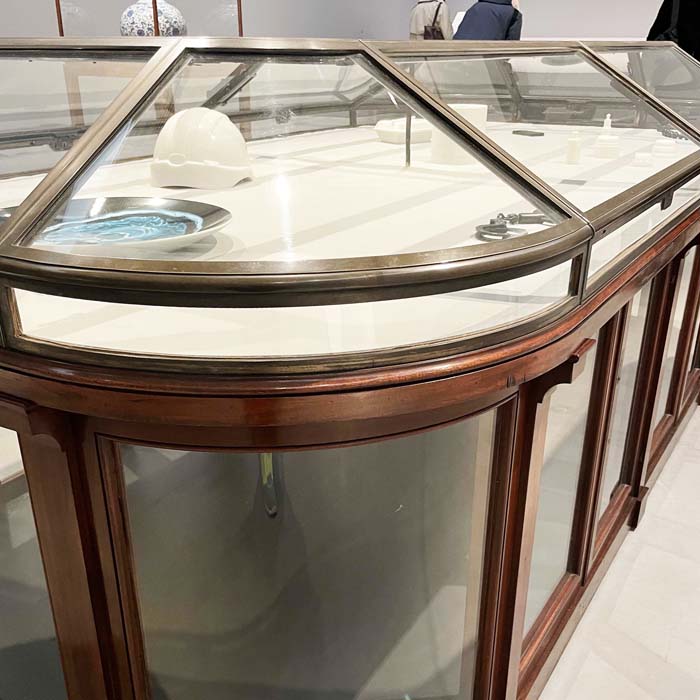
So, all is not as it seems. Things are not what we’re told that they are, nor what we think they are. They are not necessarily made when it appears they should have been, nor comprised of the materials we’d expect them to be. And many of these objects are contained, in the centre of one of the galleries, by the vitrine salvaged from the Ceramics department of The British Museum – still with its original labels: “Early Chinese Ceramics”. Currents of ideas, authenticity, conflicts and ironies swirl about the island cabinet.
A Monster to Hawaii
All of these Island stories are perhaps outweighed – in terms of scale and weight and the far-flung destination – by the huge pair of gates with stone piers we sold during LASSCO’s early days at The Three Pigeons. These too are now found on an island.

The pair of stone columns comprise blocks of grey stone, each with a huge capstone at the top. They frame gates and an over-throw made from heavily wrought ironwork. It weighs several tons.
The French gateway was imported by a Kensington resident who subsequently lost his plea with the authorities to construct it within the leafy backstreets to front his red-brick townhouse. LASSCO bought it and built it at LASSCO Three Pigeons.
Old, pleasantly weathered, and a great design, the gate caught the eye of Courtney Love-Cobain in her search for a suitable present for her longtime friend and collaborator, the revered photographer David LaChapelle. She rang up and bought it and asked that we might deliver it. “No problem” we said. However, David LaChapelle’s house is remote. It’s very remote. He lives in a spectacular house – a former nudist colony – on the far side of the Hawaiian island Maui.
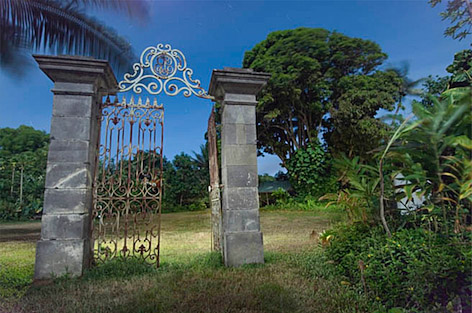
Off it all went in a container via the Panama canal and across the Pacific. The container was un-loaded quayside, the stone and iron was transferred to trucks small enough to negotiate the difficult tracks through the forest as they neared the property.
A few years later David La Chapelle supplied photographs of the gates to the Wall Street Journal – featuring the gateway now standing in his grounds – he was delighted with his present – sent from Love to Hawaii.
Anthony Reeve June 2022 LASSCO Three Pigeons
Ai Weiwei’s “The Liberty of Doubt” is at Kettle’s Yard, Cambridge www.kettlesyard.co.uk until 19th June 2022.
We would like to thank Ai Weiwei and the respective owners of the above salvages for their kind permission to share the above stories and use their supplied pictures alongside our own.
This is the third blog post of this series.
The first was “The Tale of the Asylum Railing”,
The second was “The 12th Johnson Hobby Horse”.
